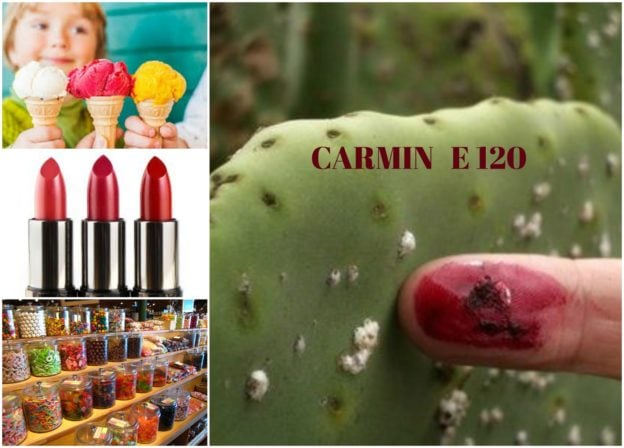We continue the serial articles “Ingredients That We keep away from”! This time, is about one of the most common ingredients we find in shelf food. The natural carmine dye or the E120!
He offers a red, purple or pink color to juices, sweets, dairy products, sausages, medicines and other colorful foods.
What is carmine (E120)?
Carmine is a natural dietary color. It is (as one of its names calls it) extracted from a species of beetles, called cochineal or Dactylopius coccus/Coccus cactus. The insect is native to South America and lives on certain varieties of cactus. The carmine dye is made from the powder obtained by crushing the female of this species after it has been previously drowned, then dried. To produce 250 g of carmine, about 70,000 insects are needed.
People used carmine dyes since ancient times for dyeing textiles, but now we can find them in the food, cosmetics and pharmaceuticals industry.
What are the effects of carmine (E120)?
The information is contradictory around the subject. Some sources say that E120 is not a dangerous additive, being on the list of additives approved by the European Union and the FDA (Federal Drug Administration, USA). Other sources say the E120 is responsible for a series of allergic reactions such as rhinitis, asthma, contact dermatitis.
It is not recommended for children, as it may cause hyperactivity (and this is mentioned on some labels).
In 2012, the European Food Safety Authority (EFSA) replaced carmine in pharmaceutical products with a colorant of plant origin.
People who have adopted the vegan regime or members of certain religious communities for moral and spiritual reasons should not eat such products containing carmine (E120).
How do we keep away from carmine?
Reading the Label! In other words, we also find E120 under the name of carmine, carminic acid, cochineal or even natural red 4.
We keep away from carmine avoiding packed products as much as possible and, of course, replacing them with home-made foods from natural ingredients.
You can color your home-made dishes (including desserts and drinks) using vegetal colors. You can use beet juice, fruit juice, carrot juice, turmeric (curcuma), spinach.
Photo collage: diversificare.ro
Sources:
https://en.wikipedia.org/wiki/Carmine
http://www.ukfoodguide.net/e120.htm
http://www.sciencepresse.qc.ca/blogue/2011/02/11/rouge-cochenille-colorant-naturel
